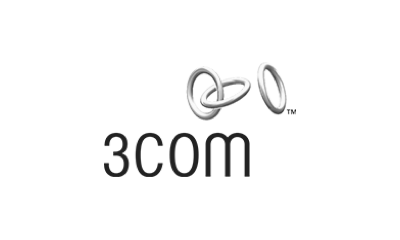WARNING: Your Next Software Product Will Be Totally Ignored. Unless You Do This…
Posted by Tech.us Category:
A few decades ago, almost all business processes were manual. Financial transactions, sales, employee working hours — you’d keep track of it all the slow, inefficient way. Companies were restricted by their geographical location for hiring the right talent for their jobs, and marketing plans weren’t nearly as accurate and effective as the ones now. With only a general idea of their targeted audience, organizations were forced to market their products to all the people who fit a certain description, be it a particular age, weight group, or profession.
However, technology has completely revolutionized the way business is done. Organizations are now equipped with the right software to carry out most tasks efficiently. The world of entrepreneurship has changed completely, and mostly for the better. Some of the ways in which the advancement in software technology has improved business processes are:
- Better Social Media Management: With the help of dedicated social media management apps and software, businesses are now able to get the most out of platforms like Facebook, Twitter, and Instagram.
- Streamlined Internal Processes: Most office software helps your employees carry out their daily tasks and achieve more in less time.
- Customer Facilitation: Many businesses have now taken their operations online. Dedicated apps and other online services help organizations provide the best services to their customers. These facilitations help businesses attract and retain customers.
We’ve barely scratched the surface with how instrumental software products are for businesses these days, and the demand for better software products is only growing with each passing day.
It’s only natural that IT experts and software developers have teamed together to meet this demand, but there are still chances that your software product might not be the big hit you hoped it would be at first. In this article, we’ll talk about what software development is, and the steps you can take to ensure that your software product is the talk of the town — or in this case, the business world.
What Is Software Development?
To understand how you can make better, more useful software you need to first understand what software development itself is. Why is it that the demand for software products keeps growing every day, and how to take advantage of the situation?
Well, software development is a process that employs different disciplines of computer science to create, deploy, and support software. The software itself is a set of instructions that tells a computer what to do. It enables computers to do tasks they were unable to before, and the potential for possible applications is unlimited.

The Demand For Software Technology Products
Despite the availability of countless off-the-shelf business software, there is an ever-increasing demand for it. Businesses aren’t the only ones looking for faster, better ways to function. Even the end consumer is interested in apps that can help them carry out daily tasks easily. The demand is ever-present and increasing, and every tech company strives to create a better, more user-friendly version of existing software. Technology keeps improving and software developers are always scrambling to keep their software products up-to-date.
If you’re developing software technology, your best bet would be to observe and assess technology that is already present and identify deficiencies and holes in their design. Then, you can create ways to fill those deficiencies and solve those problems for other businesses or your consumers. Another reason why this approach can benefit you is that in the last few years, there has been hardly any idea that’s truly new, or that hasn’t been attempted before.
Unless new trends and technologies present more problems or demands for new types of services, improving upon present software or trying to better execute an idea that has already been tried before but didn’t quite work is smart. Beware though, it’s important to tell the difference between an idea with potential that wasn’t brought to life properly and an idea that just isn’t worth it.

Why Do Software Products Fail?
Many software development projects fail, and many are unable to reach the heights of greatness they were designed to reach. There are many reasons for this, but the bottom line is that most projects fail due to a lack of clarity, be it about the project requirements, or about who does what.

Poor Time Management
Most business processes are time-sensitive. Products that gain popularity quickly can lose it just as fast. Trends change all the time, and better, quicker ways to do a particular task are invented almost every day. Seeing this, sometimes businesses can rush the development of their software so they can be put to sale in time.
What many entrepreneurs fail to take into account is that your developers and staff need to be given ample time to work on the project. Anything developed in a rush might most likely be sloppy and of poor quality. Meanwhile, a competitor might develop a working program and release it a few weeks later, but if it provides users with a better experience and runs more smoothly, your business just gave up on long-term gains for a short-term profit.

Lack of User Testing
One of the most important steps in the development of an app or software is to put it through user testing. That way, developers can pick up on design or programming flaws they would have otherwise missed. They can also assess what parts of the software are most useful to users and what parts they could possibly do without, and further efforts might help them make the app more focused on those particular features.

Lack of Clarity
In many cases, there are too many people working on the same project. Add to that poorly designed roles and you might have an inefficient and confused design team on your hands, with no idea what they are and aren’t supposed to do. That is a fate that needs to be avoided at all costs, and you can do so by hiring an experienced and trustworthy project manager.

How To Make Sure Your Software Product Succeeds
As with most production processes, there are common errors that are likely to happen and ways you can avoid them. In the last section we discussed most of these errors, and now we’ll take a look at what we can do to steer clear of them.

1. Keep Your End User In Mind
When you design an app or product, keep in mind who you’re designing it for. The end-user should be your number one priority, and you should ask yourself some questions while planning your software.
- What features does your software need to appeal to your users?
- How do the features benefit your users?
- What problem are you hoping to solve for them?
- What is your target audience? Is it other businesses? Is it a specific kind of business? Is it a specific group of people with the same interests or age?
- What trends are popular among your target audience for similar products? What do they value most? Efficiency? Usefulness? A visually appealing UI?
By asking these questions and taking their answers into account you can make sure your future customers love your product and spend money on it.

2. Have a Solid Plan In Place
With most business projects, having a good plan is a defining factor. Each step of the process needs to be well defined and you need to make sure that every member of the team is on the same page. Giving a well-defined role and task to each member will also ensure that the work is done smoothly and efficiently.
Forming a solid plan is just half of it, though. You also need to regularly check in with your team via weekly or bi-weekly meetings. This way, everyone working on their individual parts of the project will be brought up to speed on what everyone else is doing, decide what to do in case of delays, and solve any problems a member of the team is having.
Collaboration shouldn’t be limited to a single time a week, though. While everyone’s roles need to be well defined and the milestones appropriately managed, everyone should be able to help each other, collaborate, and find the solutions to problems together.
3. User-Friendly Design
Every person on the design and even the programming team needs to remember that the software is being developed to make the lives of its users easier. This leaves no room for a complicated or hard to understand UI. Everything on the software has to be easy to use and understand. Failing to do this might cost your business valuable customers and inevitably result in your product being unsuccessful in the market.

4. User Testing
One of the most important steps that software developers are tempted to skip is user testing. Before the launch of your software, you need to gauge how well users are able to use it, what problems they face, and take on their feedback. They will be able to pick up on problems that your design team missed, tell you what parts of the app are most useful, and what doesn’t perform well.
Thanks to all of this knowledge, you can then make appropriate changes to your app. This will only improve your chances of success, and it will be worth it even if it sets back your launch date by a few weeks.

5. Risk Management
The chances of everything going according to plan are almost zero when it comes to app development or any other part of the business. When aiming for growth, you can bet on having to face a few hiccups. Having proper plans and protocols in place to minimize risks and damage in case things do go awry is something every entrepreneur should do, yet a small number of them actually practice.
The popular saying “hope for the best but plan for the worst” couldn’t be more true, and your team needs to be clear on what steps to take in case things go wrong.
- What will you do in case customers don’t like your app?
- What will you do in case a competitor comes up with something better, or more liked?
- What will you do if the product isn’t as “in demand” as you thought?
- What will you do if the software is used too much and your servers cannot cope?
Countless similar problems could happen, and your team needs to be ready for each and every one of them.

Know What You Want, and Go For It!
At the end of the day, the most important thing is to know what kind of software you want and have a clear vision for what you’re hoping to achieve. When you’re able to visualize a goal, it’s easy to explain to others what you want and for them to help you make it happen.


Trusted by:






We are a team of technology experts who are passionate about what we do. We LOVE our customers. We LOVE technology. We LOVE helping you grow your business with technology.
Our Company
Our Services
Talk To Us
We are a team of technology experts who are passionate about what we do. We LOVE our customers. We LOVE technology. We LOVE helping you grow your business with technology.
